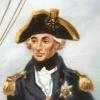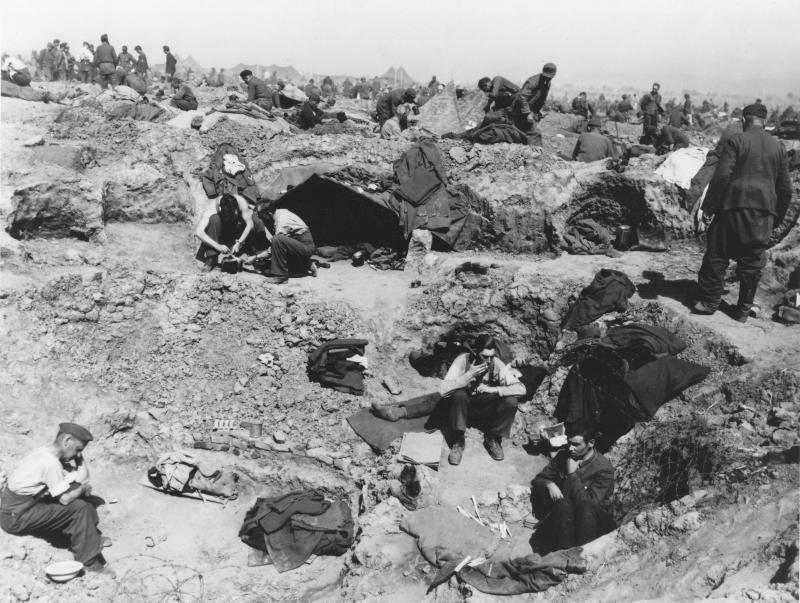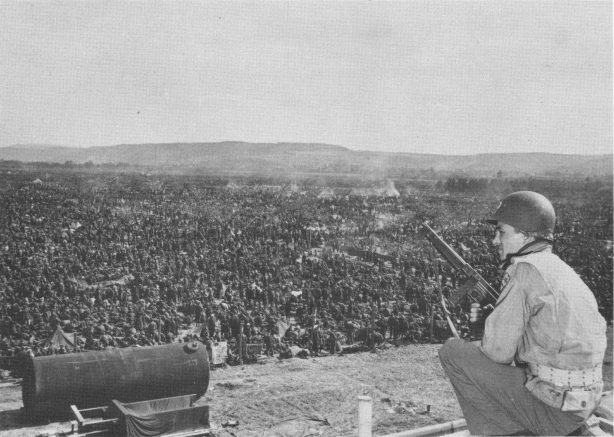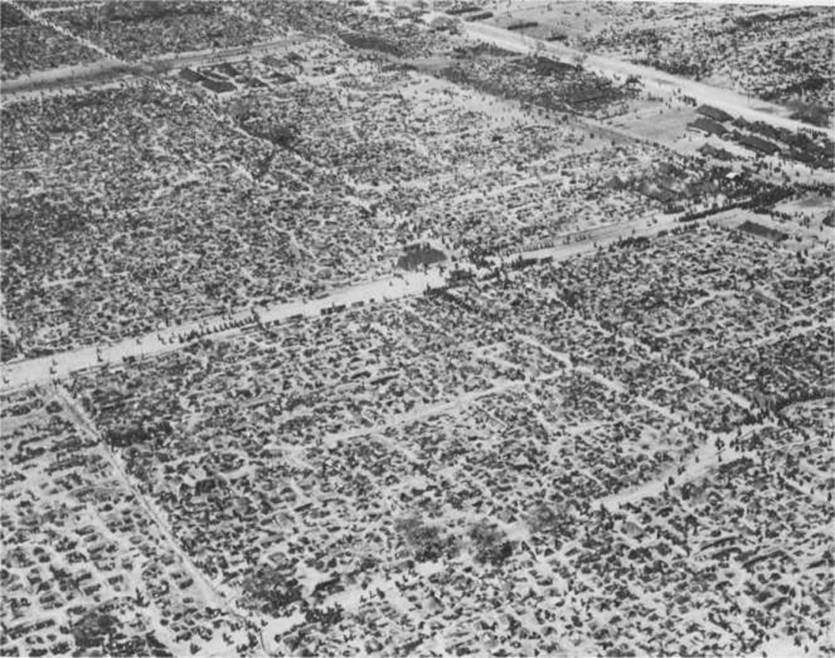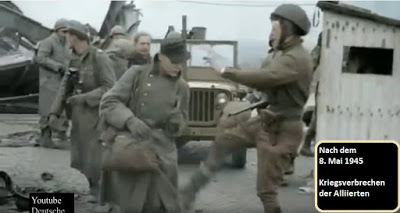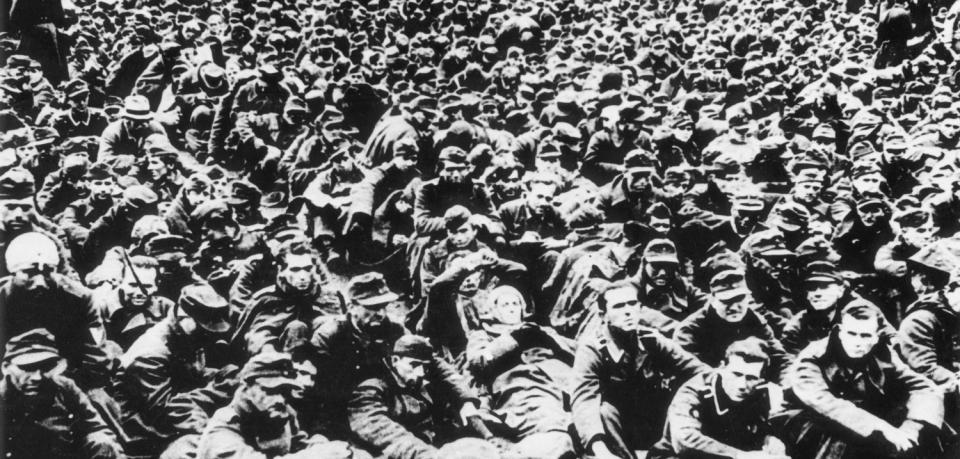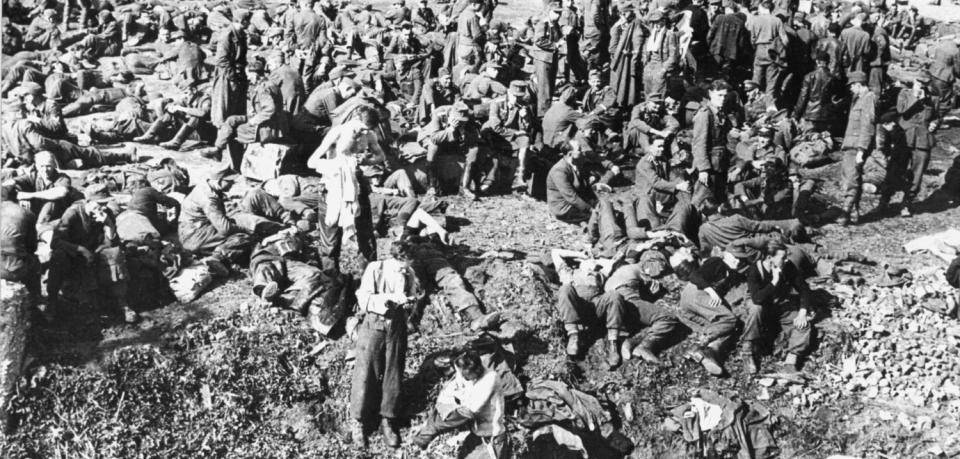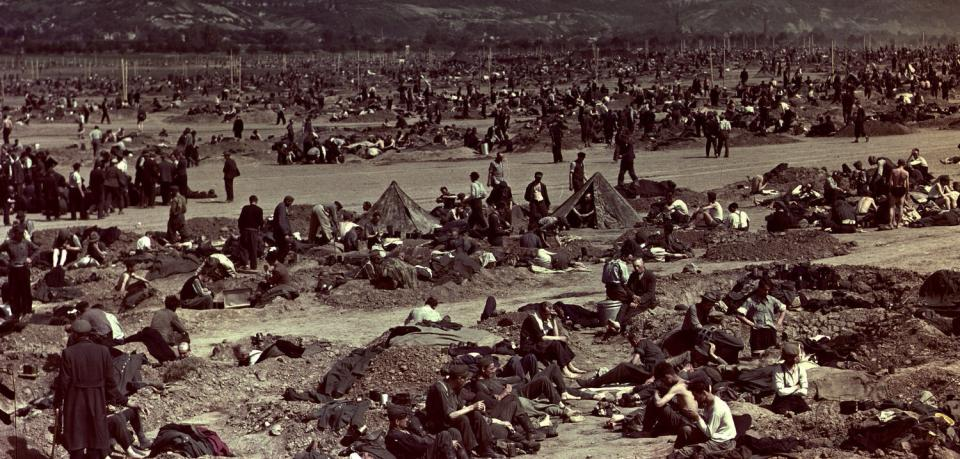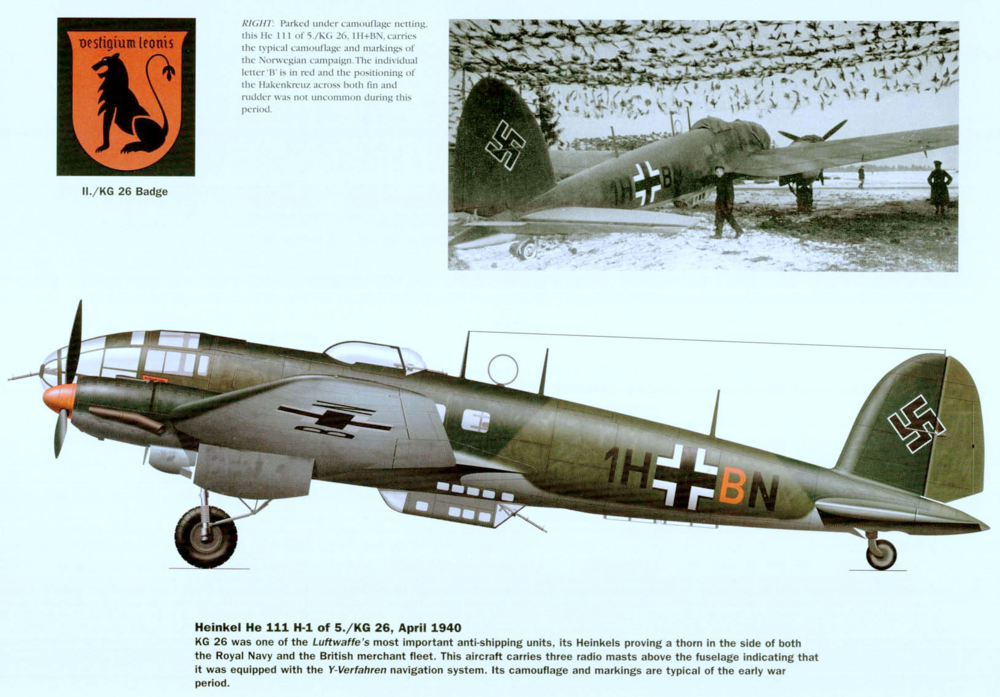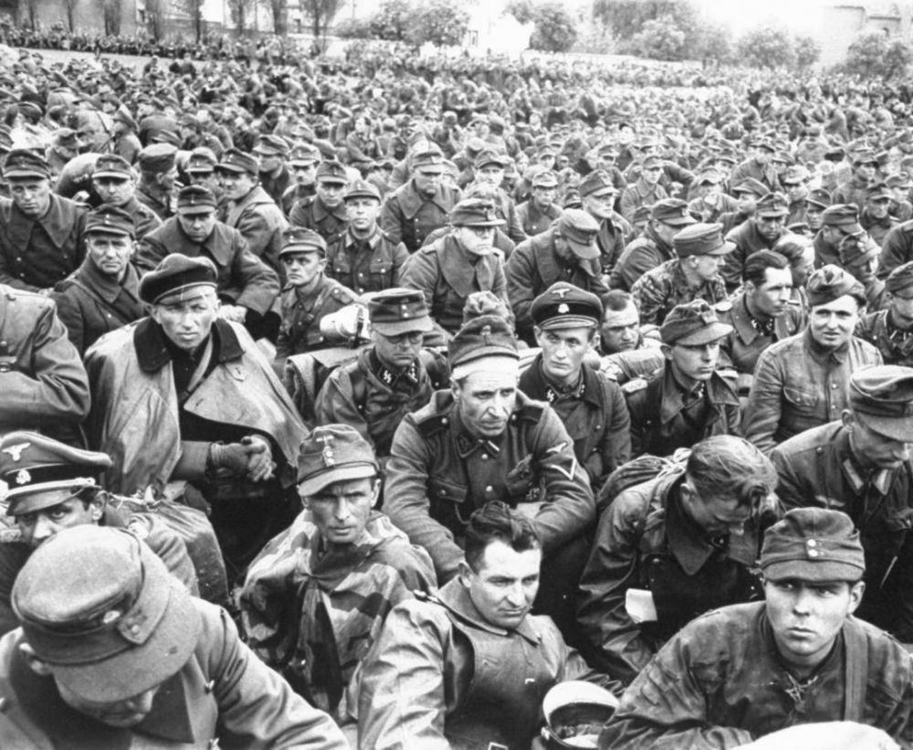Leaderboard
Popular Content
Showing content with the highest reputation on 23/06/19 in all areas
-
At the end of the war the Americans interned millions of German prisoners of war on the Rheinwiesen. They had been declared as D.E.F. or "Disarmed Enemy Forces" by the US Army and denied their rights as prisoners of war. They were kept for months behind barbed wire without accomodation, provisions or shelter. The prisoners lived under appalling, unhygienic conditions with a lack of sanitation and overcrowding. Exposure to all weathers, disease and undernourishment took their toll, and brought about a high mortality rate. Medical care and access by the Swiss Red Cross was denied by the Americans. This was quietened down for many years. The full number of victims has not been accounted for to this day. The camps are thought to have held up to three and a half million prisoners. Those who died were transported daily by the lorryload in the early hours of the morning to unknown destinations. Any unauthorised persons approaching the camp perimiters and wire fencing would be fired on. Footnote: Zum Fremdschämen (DIE WELT) "Es geht um den Brief eines pensionierten Offiziers der US-Army. Darin entschuldigt sich ein Major Merrit P. Drucker in einem auf Englisch und Deutsch per Mail-Listen verbreiteten Brief für die „Misshandlung deutscher Kriegsgefangener im Gewahrsam der Vereinigten Staaten in Deutschland“. Ihre Gefangenschaft sei gekennzeichnet gewesen durch „hartherzige Brutalität und äußersten, oft tödlichen Mangel zu einer Zeit, als wir, die USA, die moralische Verpflichtung und die materiellen Mittel hatten, um die früheren Feinde, die sich in unserer Hand befanden zu versorgen“. Brief über die Rechtlosigkeit deutscher Kriegsgefangener unter der britischen Besatzungsmacht <Status of Surrendered Enemy Forces. A260, 28 Jun 45. GERMAN HQ Reference your letter Br B Nr 7/45 dated 25 June 1945. 1. You have no legal status. 2. The term "Unconditional Surrender" means precisely what it say namely that GERMANS, both military and civilian, and including all others who have fought or been associated with GERMANY in the war against the Allies, have absolutely no rights or claims whatever. 3. It is entirely within the discretion of the Allies whether you are treated as Prisoners of War or as Surrendered Personnel, and your status may be changed from time to time according to the wishes of the Allies. 4. The GENEVA or any other convention does not apply nor are you accorded any Protecting Power, nor do you enjoy as of right, any privileges normally accorded to Prisoners of war. 5. Allied Force HQ have confirmed the above. Lt Col, AAG 21 Tk Bde Force. CMF [web05 Overmans, S.88] Deutsche Kriegsgefangene 1945 Grossbritannien 3.635.000 USA 3.097.000 Gulag-Sowjetunion 3.060.000 Frankreich 937.000 Jugoslawien 194.000 Polen 70.000 Belgien 64.000 Tschechoslowakei 25.000 Niederlande 7000 Luxemburg 5000 INSGESAMT 11.094.000 aus: Information für die Truppe, Heft 11 / 1985; [web12 Gückelhorn / Kleemann, S.14]1 point
-
These are some of the photos for post war Germany, from the 2nd album I got. they were taken in the British Zone around Hamburg area I think most are from 1949 just after the German Federal Republic was formed. 1st pic shows Sir Brian Robertson, from 1945 was deputy Military Governor and from 1947, was the Military Governor and British member of the Allied Control Council for Germany. He became High Commissioner from 21 Sept 1949 to 24 June 1950, he then went on to be Commander-in-Chief of Middle East land forces, and Governor of the Suez- Canal Zone, he retired in 1953. 2nd pic shows John McCloy High Commissioner American Zone From 2 sept 1949 to 1 August 1952. 3rd pic High Commission escort. 4th pic Hamburg Unit 1949.1 point
-
Beisetzung von Kapitän z. See Langsdorff, Buenos Aires, 19391 point
-
The longest dogfight of WW1 was between British Ace Major Lanoe George Hawker, and German Ace Manfred von Richthofen on 23 November 1916. Lanoe George Hawker born 30.12.1890 in Longparish Hampshire, was the 1st Ace of the British Commonwealth. An aggressive combat pilot, his motto was "Attack Everything". Flying a B.E.2c ( Bierot Experimental 2 ) airoplane often called the Quirk and armed with a few bombs and hand grenades, he successfully attacked the Zeppelin shed at Gontrode in April 1915 and received the Distinguished Service Order for this action. Hawker with mechanic Ernest Elton devised a mount for attaching a Lewis gun to a Bristol Scout in June 1915, while testing his invention he chased off one German aircraft and drove down to the ground two others, for this action he became the first pilot to receive the Victoria Cross for aerial combat. Hawker was killed on the 23 November 1916 in the longest dogfight of the war, flying a Airco D.H.2. he engaged an Albatros D.II. behind German lines flown by Manfred von Richthofen and was killed by a bullit in the head from Richtofen's guns . Described by Richthofen himself as "The British Boelche" and his most famous adversary. Hawker with 7 kills to his credit became Richthofen's 11th victim. "I attacked together with two planes a D.H.2 one seater at 3,000 meters altitude, after a long curving fight of 3 to 5 minutes I had forced down my adversary to 500 meters,he now tried to escape flying in front up and down and side to side, I pursued him and brought him down after 900 shots". Manfred von Richthofen's combat report. After this combat Richthofen was convinced he needed a fighter aircraft with more agility, even at a loss of speed. He switched to the Albatros D.III in January 1917.1 point
-
This short film gives a vague impression of the overcrowding and the conditions of the camps, here said to be over 50.0001 point
-
This photo arrived today. A He 111 of KG 26 - 1H+BN - was offered as "..under camouflage netting, Winter 1939/40" However, another source states this as Norwegian Campaign 1940. Said to be of 5./KG 26, the emblem is wrong, according to Hauptmann Rudiger Schmidt, the emblem was always on a white background, the red shown here is wrong. An official press photo without inscription. The other example can be seen under: https://www.asisbiz.com/il2/He-111/KG26/pages/Heinkel-He-111H1-5.KG26-(1H+BN)-Norwegian-Campaign-1940-01.html more illustrations under this link: https://www.asisbiz.com/il2/He-111/KG26.html1 point
-
Eisenhower’s Starvation Order By James Bacque Never had so many people been put in prison. The size of the Allied captures was unprecedented in all history. The Soviets took prisoner some 3.5 million Europeans, the Americans about 6.1 million, the British about 2.4 million, the Canadians about 300,000, the French around 200,000. Uncounted millions of Japanese entered American captivity in 1945, plus about 640,000 entering Soviet captivity. As soon as Germany surrendered on 8 May 1945, the American Military Governor, General Eisenhower, sent out an “urgent courier” throughout the huge area that he commanded, making it a crime punishable by death for German civilians to feed prisoners. It was even a death-penalty crime to gather food together in one place to take it to prisoners … The order was sent in German to the provincial governments, ordering them to distribute it immediately to local governments. Copies of the orders were discovered recently in several villages near the Rhine … The message [which Bacque reproduces] reads in part: “… under no circumstances may food supplies be assembled among the local inhabitants in order to deliver them to the prisoners of war. Those who violate this command and nevertheless try to circumvent this blockade to allow something to come to the prisoners place themselves in danger of being shot….” Eisenhower’s order was also posted in English, German and Polish on the bulletin board of Military Government Headquarters in Bavaria, signed by the Chief of Staff of the Military Governor of Bavaria. Later it was posted in Polish in Straubing and Regensburg, where there were many Polish guard companies at nearby camps. One US Army officer who read the posted order in May 1945 has written that it was “the intention of Army command regarding the German POW camps in the US Zone from May 1945 through the end of 1947 to exterminate as many POWs as the traffic would bear without international scrutiny.” … The [American] army’s policy was to starve [German] prisoners, according to several American soldiers who were there. Martin Brech, retired professor of philosophy at Mercy college in New York, who was a guard at Andernach in 1945, has said that he was told by an officer that “it is our policy that these men not be fed.” The 50,000 to 60,000 men in Andernach were starving, living with no shelter in holes in the ground, trying to nourish themselves on grass. When Brech smuggled bread to them through the wire, he was ordered to stop by an officer. Later, Brech sneaked more food to them, was caught, and told by the same officer, “If you do that again, you’ll be shot.” Brech saw bodies go out of the camp “by the truckload” but he was never told how many there were, where they were buried, or how. … The prisoner Paul Schmitt was shot in the American camp at Bretzenheim after coming close to the wire to see his wife and young son who were bringing him a basket of food. The French followed suit: Agnes Spira was shot by French guards at Dietersheim in July 1945 for taking food to prisoners. The memorial to her in nearby Buedesheim, written by one of her chidren, reads: “On the 31st of July 1945, my mother was suddenly and unexpectedly torn from me because of her good deed toward the imprisoned soldiers.” The entry in the Catholic church register says simply: “A tragic demise, shot in Dietersheim on 31.07.1945. Buried on 03.08.1945.” Martin Brech watched in amazement as one officer at Andernach stood on a hillside firing shots towards German women running away from him in the valley below. The prisoner Hans Scharf … was watching as a German woman with her two children came towards an American guard in the camp at Bad Kreuznach, carrying a wine bottle. She asked the guard to give the bottle to her husband, who was just inside the wire. The guard upended the bottle into his own mouth, and when it was empty, threw it on the ground and killed the prisoner with five shots. ….Many prisoners and German civilians saw the American guards burn the food brought by civilian women. One former prisoner described it recently: “At first, the women from the nearby town brought food into the camp. The American soldiers took everything away from the women, threw it in a heap and poured gasoline [benzine] over it and burned it.” Eisenhower himself ordered that the food be destroyed, according to the writer Karl Vogel, who was the German camp commander appointed by the Americans in Camp 8 at Garmisch-Partenkirchen. Although the prisoners were getting only 800 calories per day, the Americans were destroying food outside the camp gate. James Bacque, Crimes and Mercies: The Fate of German Civilians Under Allied Occupation, 1944-1950, pp. 41-45, 94-95.1 point
-
Heinkel He-111 8747. This aircraft was shot down by a Blenheim of 23 sqdn and was forced to ditch just off shore at Norfolk. All of the crew was captured. The wreck remained off shore until 1969 when it was blown up as it was considered a hazard to navigation. In the picture you can see the hydraulic ram for the tailwheel.1 point
-
1 point
-
1 point
-
1 point
-
1 point
-
Yes killed during a legendary dogfight with 7 British S.E.5s of No 56 squadron, In which Voss drove 2 planes to the ground and damaged the rest before his Fokker DR.1 Tri-plane was shot down credited to British ace Arther Rhys Davids. Quotes. I shall never forget my admiration for that German pilot who single handed fought 7 of us for 10 minutes, I saw him go down in a fairly steep dive and so I continued to watch, and then saw the tri-plane hit the ground and disappear into a thousand fragments, for it seemed to me that it literally went to powder. (" James McCudden " Capt ). His flying was wonderful, his courage magnificent and in my opinion he is the bravest German airman whom it has been my privilege to see fight. (" James McCudden " ). On 24 Sept 1917 the day after the air battle a British patrol reached the crash site, documents in Voss's pocket identified him McCudden and the others had no idea who they had shot down up to this point. A military doctor cursorily examined the corpse, he noted 3 bullet wounds, one upwards through the chest cavity from right to left, consistant with pilot Hodge's angle of fire, it would have killed Voss in less than a minute. The other two bullet wounds pierced Voss's abdomen from rear to front, coinciding with Rhys-Davids firing angle. Werner Voss was buried like any other soldier near Plum Farm north of Frezenberg West Flanders, laid in a shell crater without coffin or honours. The field grave would be subsequently lost through the turmoil of ongoing ground fighting.1 point
-
Other British Aces shot down by Richthofen. 13th victim. Captain Arthur Gerald Knight ( DSO ) with 8 victories ( KIA ).in a D.H.2 of 29th Sq. 15th victim. Captain J.B. Quested ( MC ) and Lt HJH Dicksee gunner with 8 victories ( Pilot WIA/gunner unhurt ).in a F.E.2b of 11th Sq. 54th victim. Lieutenant Robert Wallace Farquhar with 6 victories ( unhurt ) in a SPAD VII of 23rd Sq killed 1 year later. 55th victim. Captain Norman George McNaughton ( MC ) Pilot with 5 victories ( KIA ). and Lieutenant Angus Hughes Mearns gunner ( KIA ) in a D.H.4 bomber of 57th Sq. 71st victim. Captain Thomas Sydney Sharpe (DFC ) with 6 victories ( wounded / POW ). in a Sopwith Camel of 73rd Sq. 76th victim. Captain Sydney Philip Smith with 5 victories ( MIA ) body never found. in a Sopwith Camel of 46th Sq. 79th victim. Captain Richard Raymond-Baker ( MC ) with 6 victories ( KIA ). in a Sopwith Camel of 3rd Sq. After his 1st confirmed victory, Richthofen ordered a silver cup engraved with date and type of aircraft from a jeweller in Berlin. He continued this until he had 60 cups, by which time the dwindling supply of silver in Germany meant that silver cups like this could no longer be supplied. Richthofen discontinued his orders rather than accept cups made of pewter or base metal.1 point
-
1 point




